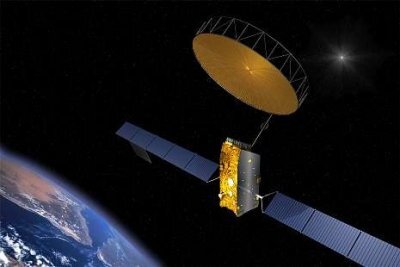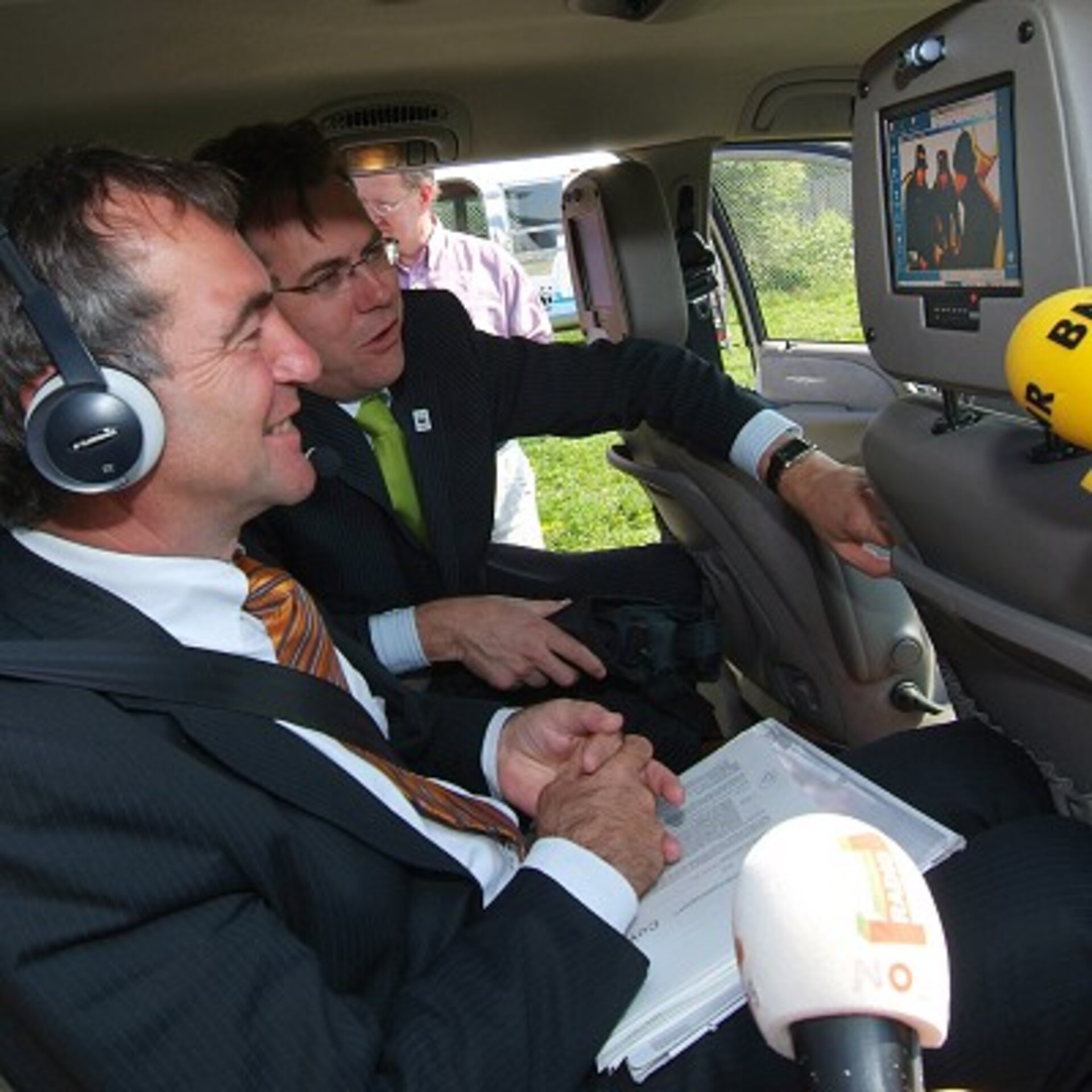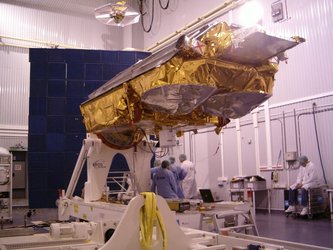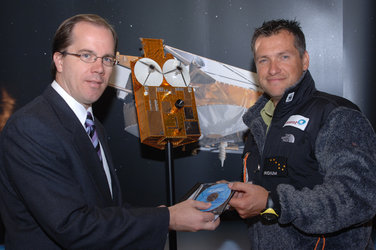ESA enables video-conference between arctic explorers and Dutch State Secretary
A mobile video conference on 9 May allowed communication between an arctic exploration team, led by Marc Cornelissen in Greenland, and the Dutch State Secretary for the Environment, Mr Pieter van Geel, in the Netherlands. Two video-conferencing sessions took place, both via the ESA Multimedia Van.
The first session was a 'mobile link' while Mr Van Geel was travelling in the ESA Multimedia Van en-route from the Dutch Parliament to ESTEC. He and Mr Marc van den Tweel, Marketing and Communication Director for the World Wildlife Fund (WWF) in Europe spoke directly with Cornelissen and his team in their tents for 30 minutes. They discussed climate issues and the progress of the expedition.
The students and Cornellissen told the minister of their experiences on the Greenland Ice Cap, meeting the local Inuit people and performing scientific research in difficult weather conditions. When the group returns from their expedition later in May, the 'real' climate campaign for the students will begin as they speak and write about what they have seen; explaining that the climate is changing and mankind is influencing that change.
Before going on to attend an international conference on climate issues at the United Nations in New York City, Mr Van Geel visited the Space Expo adjacent to ESA’s European Space Research and Technology Centre (ESTEC) at Noordwijk, in The Netherlands. Here, a second video-conferencing session took place between journalists from the Dutch media and the polar expedition team. During this 'video-press conference,' journalists were able to pose questions to Cornellissen and his team on the progress of their expedition and the results of the scientific research.
ESA Multimedia Van

The ESA Multimedia Van is a prototype vehicle designed to demonstrate a wide array of multimedia communications technologies, most notably satellite-based UMTS (Universal Mobile Telecommunications System) services.
Critical to this link was Inmarsat's recently launched I-4 satellite which was connected with terrestrial UMTS into a hybrid network, enabling a bi-directional link from the van to Greenland. These kinds of hybrid satcom/UMTS networks will become more prevalent in the future as applications such as mobile television gain popularity.

The Inmarsat 4 satellite was developed by Astrium of the United Kingdom and its Broadband Global Area Network (BGAN) payload was based on research and development activities supported by ESA. The BGAN payload is one of the most advanced in operation, utilising on-board processing techniques.








